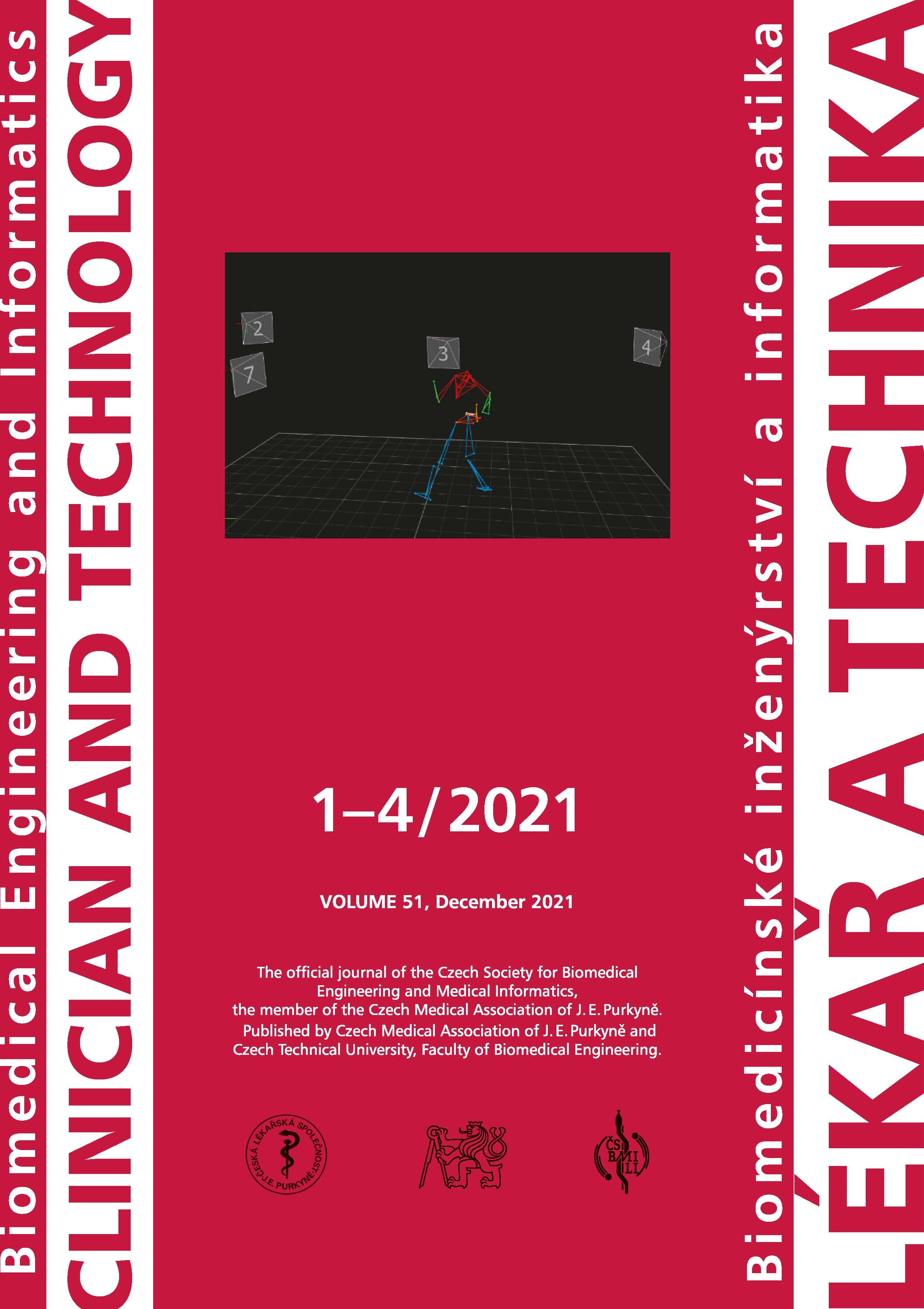THE USE OF FLUID-FILLED CATHETERS AS REFERENCE BLOOD PRESSURE MONITORS
DOI:
https://doi.org/10.14311/CTJ.2021.1.01Abstract
The standard ISO 81060–2:2018 allows the use of invasive blood pressure monitoring systems as reference gauges in clinical trials of automated non-invasive automated sphygmomanometers. The reference measuring system is subject to requirements for a maximum permissible error of ±2 mmHg, and the resonant frequency and damping coefficient must also be characterized. The 'catheter-sensor' system used in clinical practice only has defined parameters required by the standard for the chamber with the pressure sensor. The characteristic parameters of the whole measuring system cannot be defined even when the type of catheter used is known, because after every irrigation the system changes the values of its natural frequency (fn) and damping ratio (ζ). These parameters directly define the frequency response of the system, its resonant frequency and the damping coefficient. The characteristic parameters of the 'catheter-sensor' system were defined on the basis of an analysis of a second-order linear model and the measurement of the step response of the real system. Measurements have shown that repeated irrigation of the same 'catheter-sensor' system can change the value of the system’s natural frequency by tens of Hz. In well-irrigated systems, the accuracy required by the standard was met. The following values were determined for this system: fn = 38.8 Hz and ζ = 0.130. In the second case, when the system was probably affected by air bubble compliancy, the measurement accuracy was much lower. The discovered deviation was tens of mmHg. This system had fn = 6.5 Hz a ζ = 0.281.
Downloads
Published
Issue
Section
License
Copyright (c) 2022 Yegor Mikhailov, Vratislav Fabián

This work is licensed under a Creative Commons Attribution 4.0 International License.
Authors who publish with this journal agree to the following terms:
- Authors retain copyright and grant the journal right of the first publication with the work simultaneously licensed under a Creative Commons Attribution License (https://creativecommons.org/licenses/by/4.0/) that allows others to share the work with an acknowledgment of the work's authorship and initial publication in CTJ.
- Authors are able to enter into separate, additional contractual arrangements for the non-exclusive distribution of the journal’s published version of the work (e.g., post it to an institutional repository or publish it in a book), with an acknowledgment of its initial publication in this journal.
- Authors are permitted and encouraged to post their work online (e.g., in institutional repositories or on their website or ResearchGate) prior to and during the submission process, as it can lead to productive exchanges.
CTJ requires that all of the content of the manuscript has been created by its respective authors or that permission to use a copyrighted material has been obtained by the authors before submitting the manuscript to CTJ. CTJ requires that authors have not used any copyrighted material illegally, as for example a picture from another journal or book, a photo, etc. It is the author’s responsibility to use only materials not violating the copyright law. When in doubt, CTJ may ask the authors to supply the pertinent permission or agreement about the use of a copyrighted material.
The opinions expressed in CTJ articles are those of authors and do not necessarily reflect the views of the publishers or the Czech Society for Biomedical Engineering and Medical Informatics.


